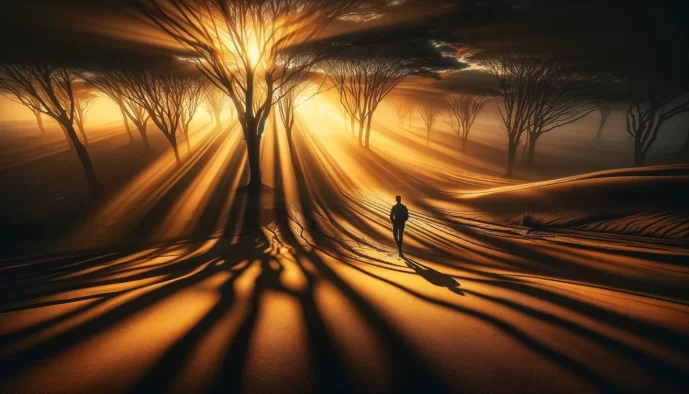Manipulating Light and Shadows
Unlock the art of light and shadow to enhance your visual storytelling.

Understanding Light and Shadow
Basics of Light in Photography
To capture the essence of a scene, photographers must first understand light, its intensity, color, and direction. Light is the paintbrush of photography; without it, a scene cannot be recorded.
The Role of Shadows
Shadows define a subject’s form and are crucial for creating a sense of volume. By interpreting shadows, viewers understand the spatial relationships within an image.
Quality of Light
Hard vs Soft Light
Hard light produces strong, well-defined shadows and is often used to create a dramatic effect. Soft light, however, is more forgiving, with gentle transitions from light to dark, commonly used for portraits.
Direction of Light
Light direction shapes a photograph. Front lighting illuminates the subject evenly, while side lighting exaggerates texture and form. Backlighting can create silhouettes or a halo effect.
Manipulating Light
Modifiers and Tools
Photographers employ reflectors, diffusers, and snoots to manipulate light. These tools control the spread and intensity, allowing for tailored illumination of a subject.
Natural vs Artificial Light Sources
Natural light, from the sun, is ever-changing. Artificial light sources—like flashguns and studio lights—offer consistency and control. Each has its advantages and must be mastered.
Shadow Play for Visual Impact
Silhouettes and Negative Space
Silhouettes strip subjects to their essence, while negative space plays with the absence of light, both techniques adding drama and intrigue to images.
Texture and Depth Enhancement
Shadows can enhance texture and give a two-dimensional photograph a three-dimensional feel. This interplay is essential for still life and landscape photography.
Light and Shadow in Composition
Leading Lines and Framing
Light and shadow can guide the viewer’s eye through the photograph, using leading lines or natural framing to draw attention to the main subject.
Balance and Contrast
A well-composed photograph strikes a balance between light and shadow, maintaining contrast without losing detail in the highlights and shadows.
Case Studies
Iconic Photographs Analysis
Study classic photos, such as those by Ansel Adams or Henri Cartier-Bresson, to see how masters used light and shadow to convey emotion and narrative.
Personal Experimentation Stories
Nothing beats personal experience. Experiment with light and shadow in various scenarios and learn from the outcomes to improve your craft.
Tips and Tricks
Exposure Settings for Optimal Results
Mastering exposure settings—ISO, aperture, and shutter speed—is vital. For instance, a lower ISO preserves detail in the shadows without introducing noise.
Creative Exercises for Mastery
Challenge yourself with exercises like shooting only during the golden hour or using only one light source. These constraints foster creativity and skill growth.